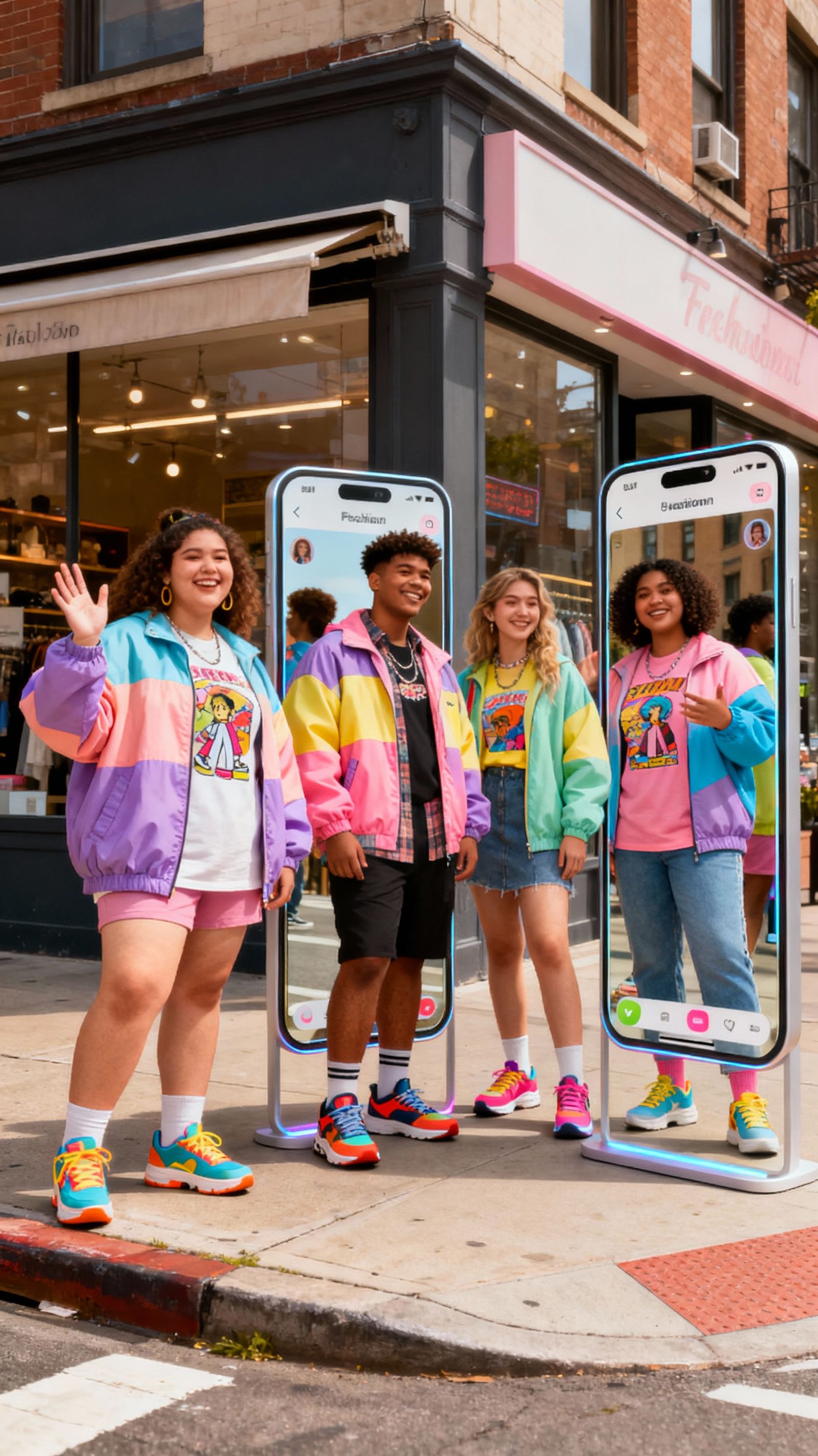5 Ways Inclusive Size Discovery Ensures Perfect Fit
What Your Swipe Speed Reveals: Inside an AI outfit planner
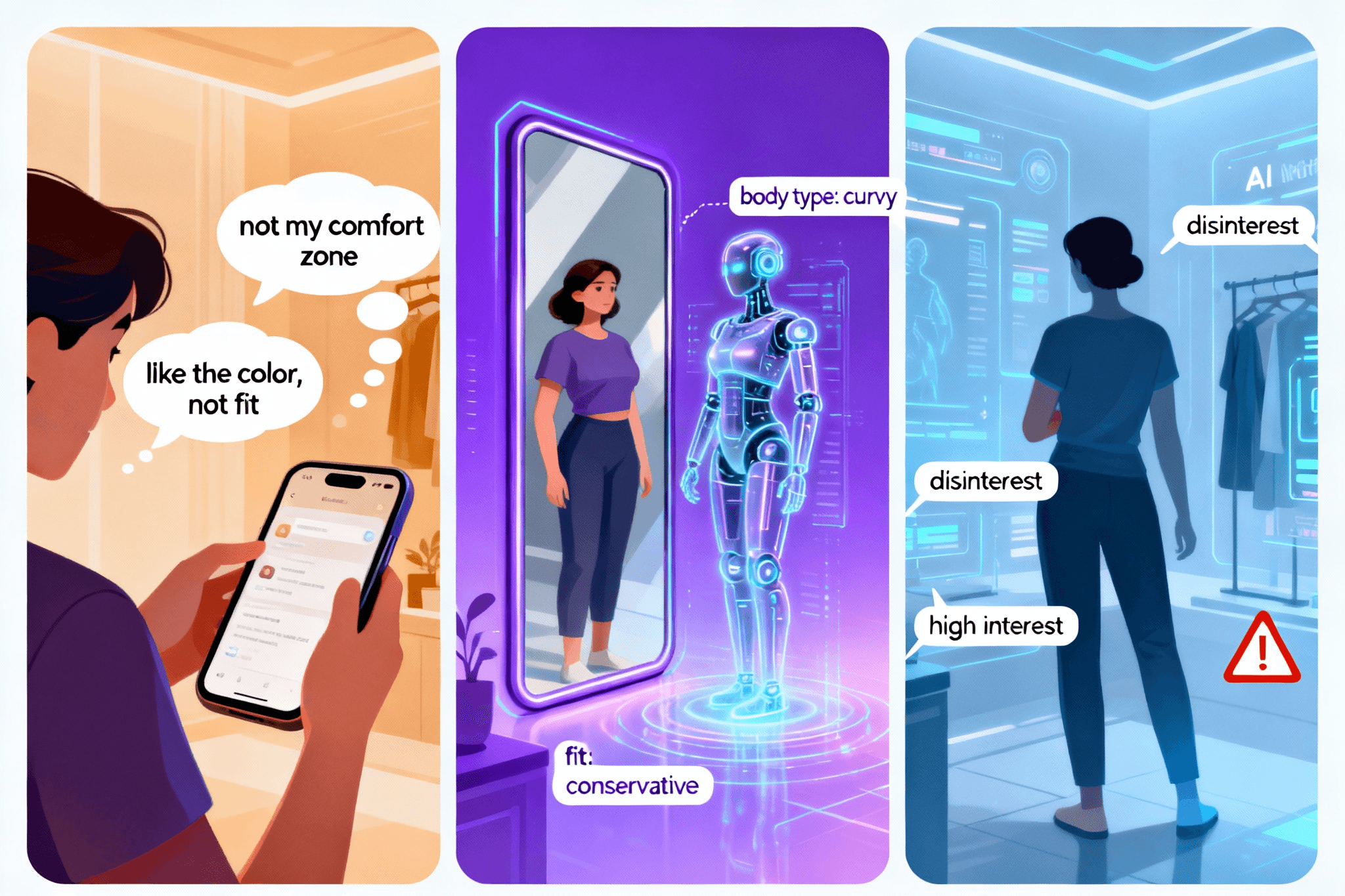

TL;DR
Your browsing rhythm — how fast you swipe, hover, or linger — reveals hidden style cues. An AI outfit planner decodes these signals through fashion psychology, turning subtle behavior into outfit suggestions tailored for you.
Have you ever wondered why some clothes feel “just right” when you browse, while others seem off — even if they look great on screen? That’s where the science of outfit planning meets psychology. With an AI outfit planner, your subtle digital gestures — swipe speed, hover duration, and interaction patterns — become data. These tiny signals help shape what feels like “your style,” often even before you consciously decide.
In this article, we explore the hidden psychology behind outfit choice, why an AI outfit planner matters, and how understanding viewer behavior can lead to smarter, more personalized outfit planning.
The Hidden Psychology Behind What You Wear
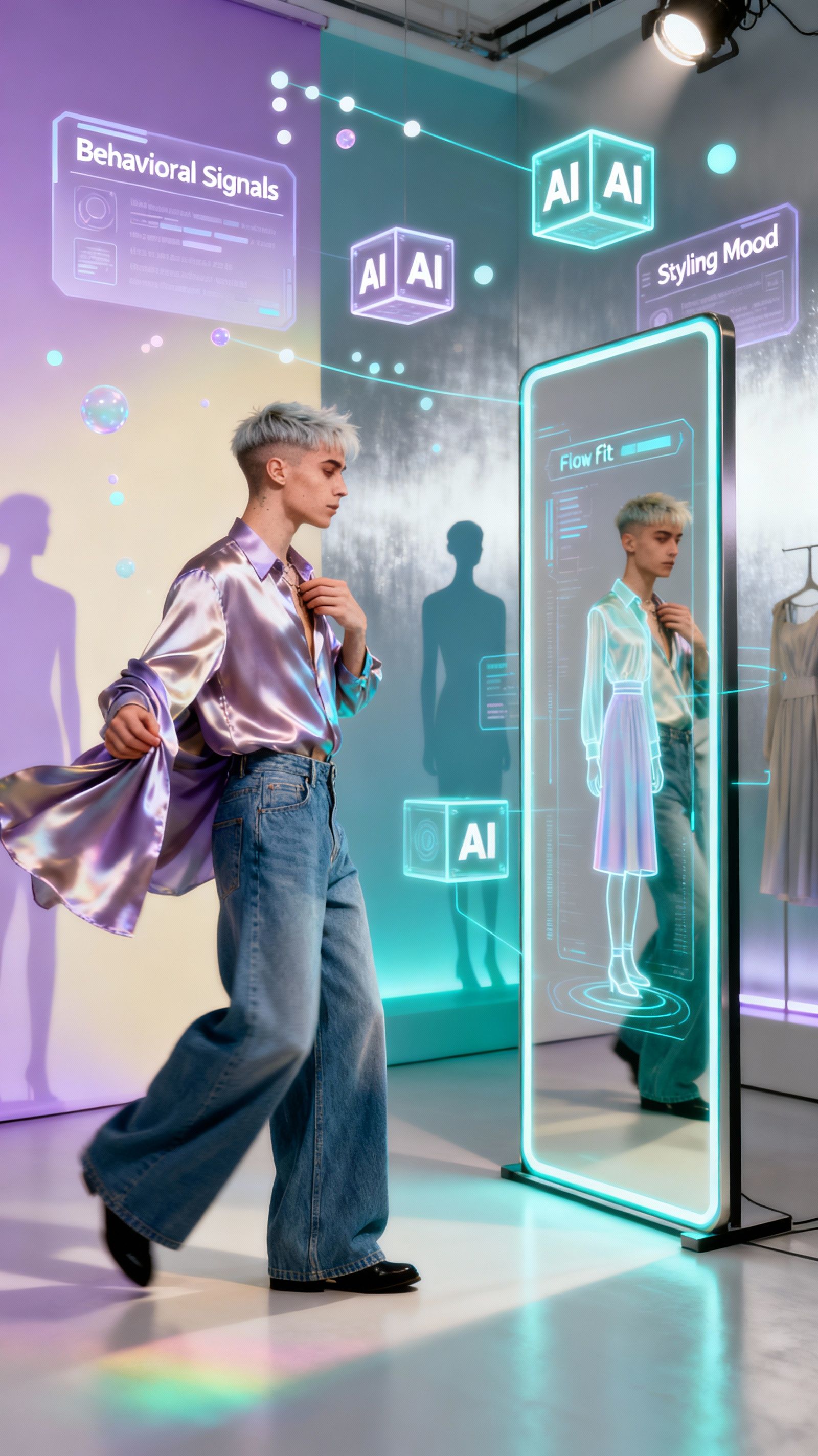
Clothing, Identity & the Mind — The Role of Fashion Psychology
What you wear isn’t just fabric. According to theories of enclothed cognition, clothes influence not only how others perceive you — but also how you see yourself.
When you browse outfits online, your preferences are rooted in deeper cues — mood, identity, comfort needs, or social aspirations. An AI outfit planner taps into those psychological triggers and aligns recommendations with your internal style ‘blueprint’.
Impulse, Involvement & Buying Behavior
Studies show that people deeply involved in fashion tend to make more impulse purchases when shopping.
So browsing speed, repeated visits, or hovering over certain styles often reflect subconscious preference — not randomness. That’s a goldmine for tools that rely on behavioral signals rather than just declared preferences.
What Your Mobile Movements Tell an AI outfit planner
- More than 75% of U.S. online shopping traffic now comes from mobile devices — smartphones dominate how we browse and shop.
- But mobile browsing also leads to high abandonment: many users browse casually without buying, or get overwhelmed by choices.
- In that noise, how you interact — not just what you click — reveals genuine intent. Fast swipes may show casual browsing; slow swipes, repeated hovers or revisits may signal real interest. An AI outfit planner reading those signals can surface outfits that are more likely to resonate with you.
By capturing micro-behaviors rather than just clicks, an AI outfit planner moves beyond classic recommendation models — and hones in on what truly aligns with your style psychology.
How Your Browsing Becomes Personalized Styling

- Behavioral Tracking & Pattern Recognition
- Tracks dwell time, hover patterns, swipe speed, browsing time (day or night), etc.
- Learn user tendencies: e.g., do you linger on bold prints? favor neutrals? browse jackets after 8 PM?
- Style Modeling via AI Twin + Personal History
- Build a “digital identity and fashion” profile based on your history.
- Maps outfits that match your color, fit, vibe, and mood preferences.
- Outfit Compatibility & Smart Matching
- Uses algorithms (like those in research on recommendation systems) that evaluate item compatibility — beyond just item popularity or fashion trends.
- Generates outfit sets — not just single items — that match your lifestyle (casual, working, party, seasonal).
- Behavior-Driven Recommendations Over Time
- The more you browse, the smarter the system gets: your AI-driven style profile evolves as you change vibes or seasons.
- This means your outfit suggestions continuously adapt based on your real behavior — a dynamic, living style guide rather than static filters.
Why Behavior-Based Recommendations Actually Work
- According to research on e-commerce behavior, nearly 90% of global consumers browse marketplaces without immediate intent to purchase — meaning many browsing sessions are exploratory.
- When platforms use personalized recommendations and real-time matching, conversion and engagement improve: customers are 20–30% more likely to buy items that feel relevant to their taste history.
- An AI outfit planner based on fashion psychology + behavioral signals thus increases the odds of discovering outfits you’ll actually love — reducing decision fatigue and regret purchases.
Essentially, by understanding user psychology through behavior, an AI outfit planner transforms random browsing into smart fashion shopping — more efficient, more expressive, and more sustainable.
Practical Tips for Using an AI outfit planner
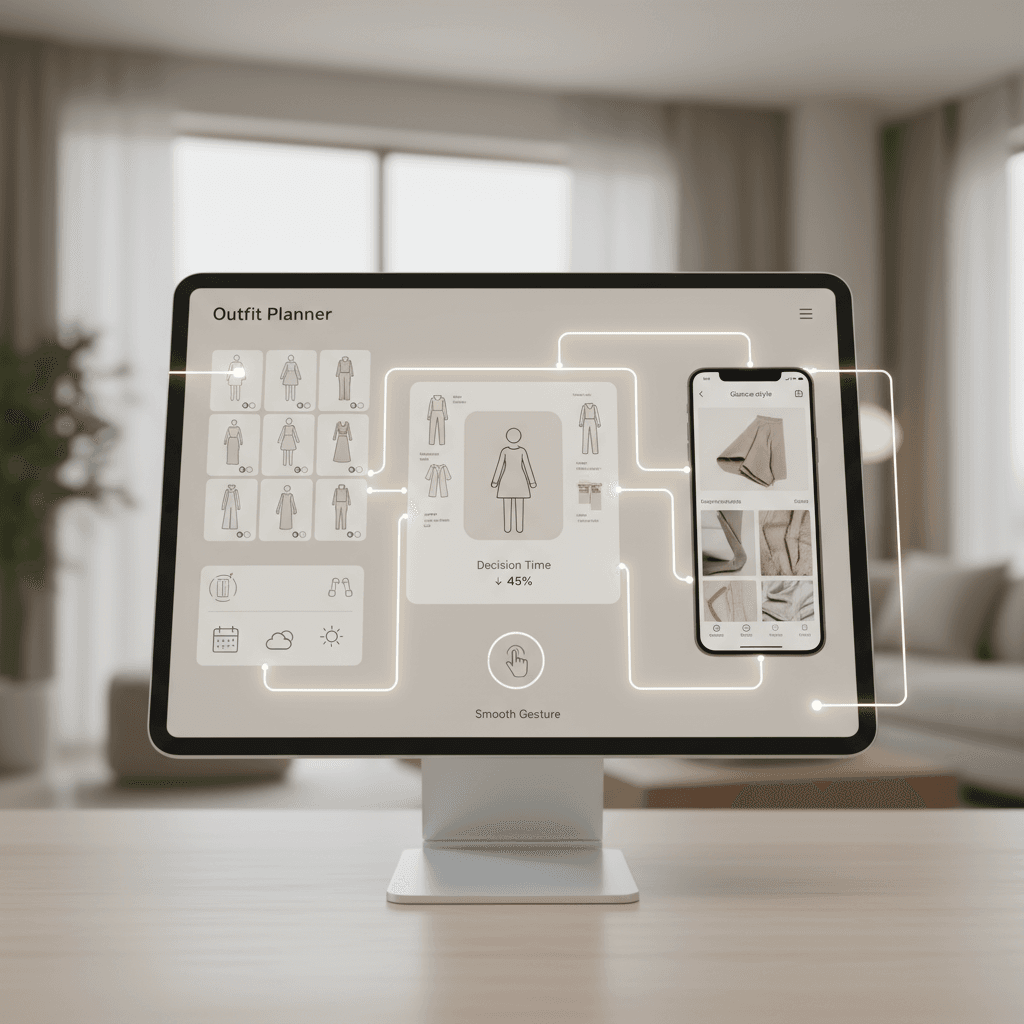
- Take your time: If you hover on items or revisit certain styles, that likely means they speak to your style identity.
- Be aware of mood & context: Shop at different times (morning vs night) — your preferences might shift, and the planner learns from that.
- Stick to basics + experiment: Use core wardrobe staples but occasionally browse bold pieces — this balance helps your AI profile stay flexible.
- Review your history occasionally: See what outfits were suggested and whether you actually wore them — helps reinforce good recommendations.
- Trust subtle signals over obvious picks: Often your subconscious picks tell more about your style than what you consciously choose.
How This Changes the Way We See Fashion & Identity
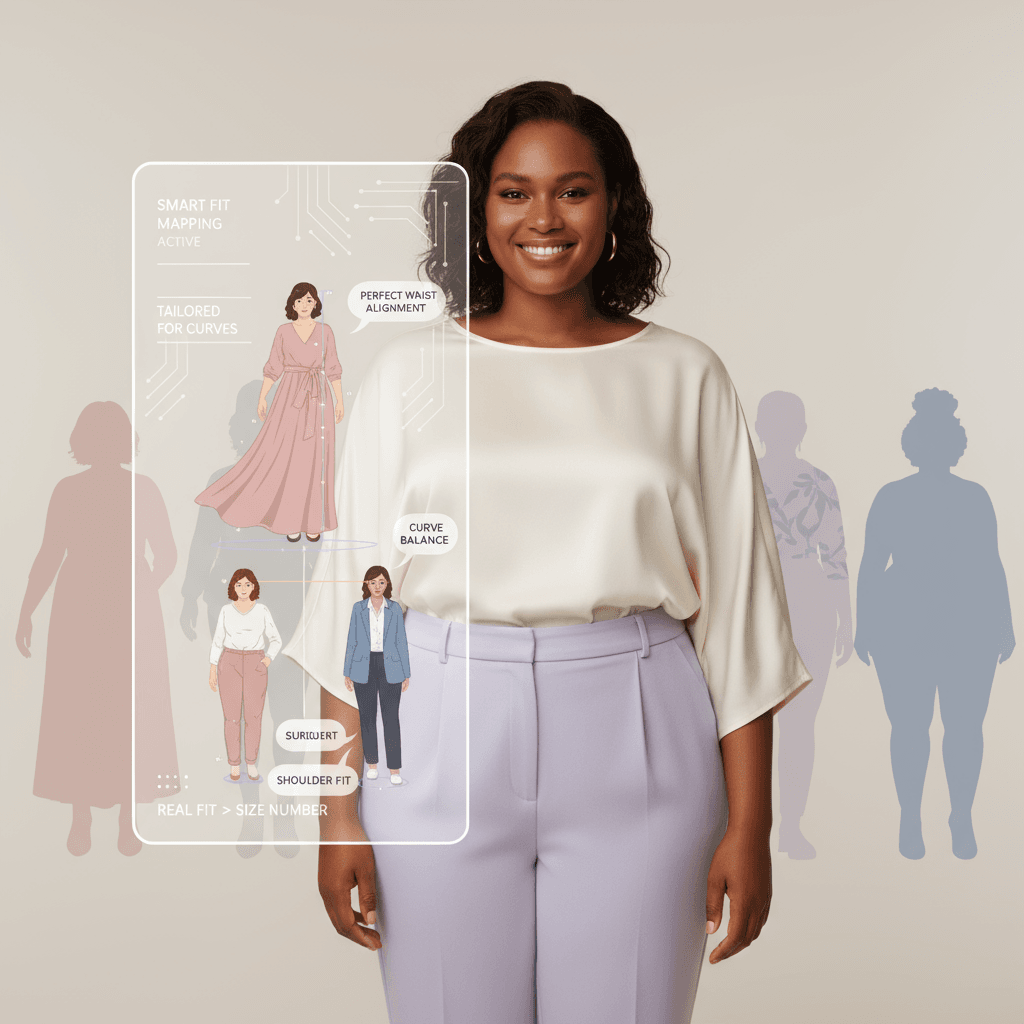
What starts as simple browsing becomes a digital expression of identity. An AI outfit planner doesn’t just sell clothes — it interprets your habits, mood, and context to help you project who you are (or want to be) through outfits.
It merges fashion psychology, digital identity and fashion, and behavior-driven AI, creating a feedback loop: your behavior shapes recommendations, which shapes your style, which shapes new behavior. It’s a new paradigm for how we approach dressing, purchasing, and self-expression.
Conclusion
Your swipe speed, hover time, and browsing rhythm are more than clicks — they’re signals. With an AI outfit planner, these signals translate into outfit suggestions rooted in fashion psychology.
This approach doesn’t just show you clothes — it helps you build a wardrobe that reflects who you are, how you feel, and how you want to present yourself.
Next time you browse, pay attention. Your style whispers — and with the right tools, you’ll hear it loud and clear.
FAQs
Q1: Is fashion psychology real or just marketing?
Fashion psychology is a recognized field. The concept of enclothed cognition shows clothes influence not just perception by others but also wearers’ thoughts and behaviors.
Q2: Can an AI outfit planner really understand my personal style from swipe data?
Yes — by analyzing patterns like dwell time, repeat visits, and item combinations, an AI outfit planner builds a “style profile” tailored to your tastes and moods.
Q3: Does this reduce impulse buying or increase it?
It aims to reduce random impulse buys by surfacing items that align with your long-term style profile — making purchases more intentional and satisfying.
Q4: Is this approach suitable for everyone?
It works best if you browse regularly and engage thoughtfully. The more data, the better the personalization.
Q5: Is my privacy safe if the planner tracks behavior?
Ethical platforms should offer transparent data usage, opt-in personalization, and secure data handling. Personal data should never be misused.




